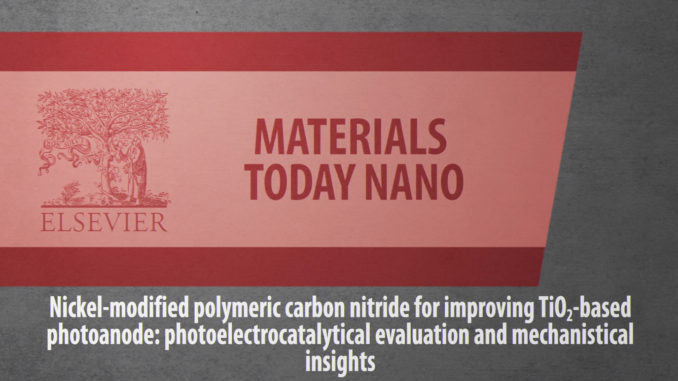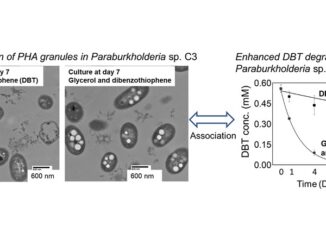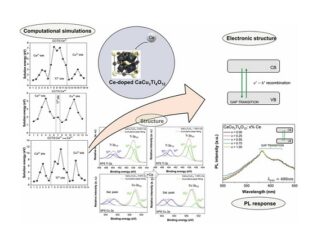
Nickel-modified polymeric carbon nitride for improving TiO2-based photoanode: photoelectrocatalytical evaluation and mechanistical insights
Abstract: Here, we report for the first time the synthesis of a TiO2-based photoanode containing nickel-modified poly (heptazine imide) (Ni–PHI), a polymeric carbon nitride, as well as its application for the methanol oxidation reaction (MOR) under solar simulated and UV illumination. The photoanode was obtained initially as a thin film and the photocurrent response was evaluated in solutions containing Na2SO4 and methanol. For the MOR under illumination in an acidic medium, an optimal composition of the catalyst was found depositing 30-layers of TiO2–Ni–PHI, which yielded a photocurrent of 11 mA cm−2 using UV radiation. The material also showed excellent stability, with a decay of approximately 5% of the photocurrent after 100 min. The improvement in the performance with Ni–PHI is likely due to the formation of a heterojunction between TiO2 and the graphitic carbon nitride, while nickel sites act through a co-catalysis process possibly driven by in situ generation of nickel active species for MOR like Ni(OH)2|NiOOH. Finally, mechanistic insights into in situ infrared Fourier transform spectroscopy showed that TiO2–Ni–PHI can selectively oxidize methanol to formaldehyde in the dark, while under the irradiation of UV light, the oxidized products are CO2 and formic acid, a product with high added value.
Author(s): Blaskievicz, S.F.; Santos, H.L.S.; Teixeira, I.F.; Bott-Neto, J.L.; Fernández, P.S.; Mascaro, L.H.
Materials Today Nano
Published: June 2022, Volume 18, 100192
DOI: https://doi.org/10.1016/j.mtnano.2022.100192
CDMF
The CDMF, hosted at the Federal University of São Carlos (UFSCar), is one of the Research, Innovation and Dissemination Centers (RIDC) supported by the São Paulo State Research Support Foundation (Fapesp), and also receives investment from the National Council Scientific and Technological Development (CNPq), from the National Institute of Science and Technology of Materials in Nanotechnology (INCTMN).




